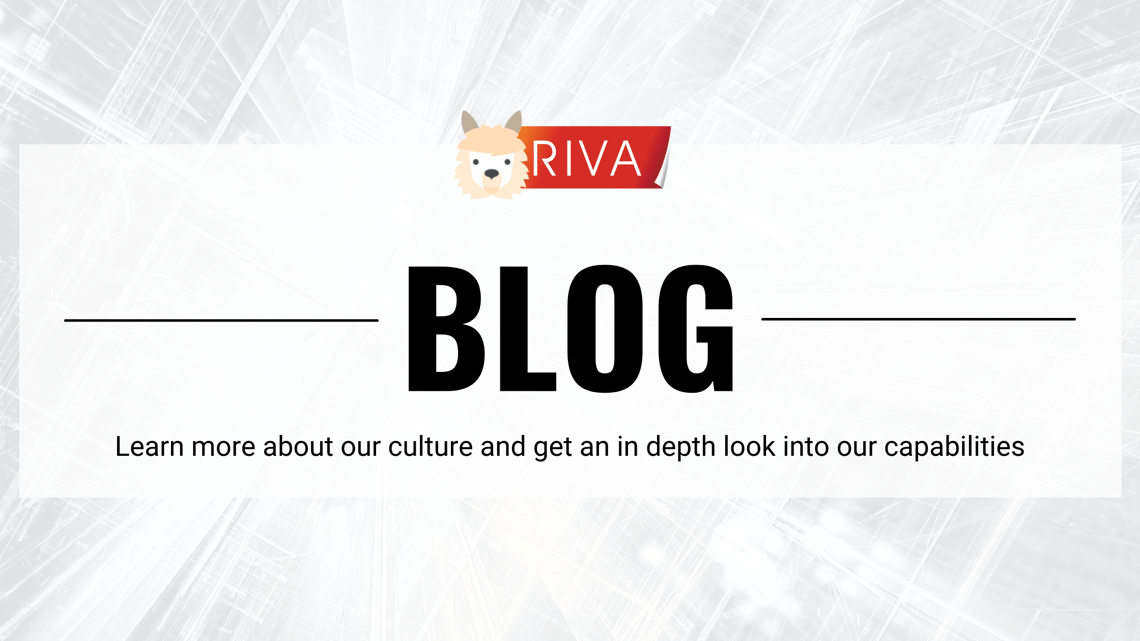Data-driven decision-making (DDDM) uses facts, metrics, and data to guide strategic business decisions that results in cost savings and increased time to invest in other initiatives. DDDM provides the ability to research and understand what is working well for a business and what is not. In this blog, we’ll look at how this approach works and how the Environmental Satellite Processing and Distribution Center System (ESPDS) team at NOAA use DDDM to efficiently leverage satellite data to track changes in oceans around the globe.
How does DDDM work?
When executed successfully, DDDM can reduce the number of manual intensive tasks your team must complete, resource lag time, and errors typical of manual repetition. With the use of automated deployment tools and processes, you can decrease deployment risk and deploy data multiple times per day without any degradation in service.
At RIVA, we keep the number of changes per release small to reduce the risk for system instabilities and user experience issues. Keeping releases small also means that every change is easier to roll back and easier to test so you can make improvements quickly and without much disruption to users. By taking an infrastructure as code approach to configuring and managing the infrastructure, your system infrastructure can respond automatically to application demands.
How do we know what data to use?
To make sure you’re leveraging the right data, it’s important to start with measuring how well a system performs, and how people are interacting with it in real-time and at every stage of a project. Here are six steps to ensure effective DDDM in your organization:
- Identify Business Objectives: Start with documenting an understanding of your organization’s executive and downstream goals. This helps to later choose key performance indicators (KPI’s) and metrics that influence decisions made from data.
- Find Key Sources of Data: Getting input from stakeholders across the organization gives you a complete understanding of short- and long-term goals. This stakeholder input helps inform your analytics deployment and future state.
- Collect and Prepare the Data: Focus your collection efforts on data with high impact such as a big audience and low complexity. Prioritizing these types of data sources enables you to make an immediate impact, so you can meet strategic objectives sooner.
- View and Explore Data: Representing data and insights in a visually impactful way increases the chances of influencing decision makers. We’ve developed our own product Innovisum which migrates away from manual Excel spreadsheets to deliver a visually-pleasing dashboard by transforming a CSV file into a Grafana-InfluxDB instance to create a powerful data-based decision dashboard for any project team.
- Develop Insights: Critical thinking with data means finding insights and communicating them in a useful, engaging way.
- Act on and Share Insights: Data-driven insights are only helpful if they’re used. Once insights are discovered, put them into action or share them with others to inform collaboration and increase productivity. One way to do this is to share dashboards. Highlighting key insights by using informative text and interactive visualizations can impact audience decisions.
Now that we have the framework, here’s an example of what DDDM looks like when implemented in a government environment.
What does DDDM look like in practice?
On one of our contracts with the National Oceanic and Atmospheric Administration (NOAA), RIVA supports the Environmental Satellite Processing and Distribution Center System (ESPDS and Project Management Office (PMO) with oversight and management key satellite data and metrics. The ESPDS processes NOAA polar and geostationary environmental satellite data and products, as well as data and products received from non-NOAA satellite assets. The major ESPDS segments are ingesting, product generation, product distribution, and infrastructure.
RIVA teams at NOAA have assisted the PMO team in adopting a data-driven culture. Historical data and data based on critical Department metrics is collected, analyzed, and presented to stakeholders as reports for predictive analysis and decision-making. With these reports, stakeholders are better equipped to make smarter strategic decisions that align with the Department’s goals and objectives. Some activities that PMO conducts are as follows:
- Change control board approvals
- Supervision of engineering projects
- Engineering release planning
- Risk board management
- Engineering coordination
- Verification, transition to operations
- Integration and interface
- Facilities, architectural design
- IT Security, Requirements Management
The ESPDS PMO’s data-based decision management informs NOAA’s future endeavors to streamline data practices and improve environmental leadership. DDDM empowers the PMO team to examine data from specific periods to generate predictive insights and strategic opportunities. These valuable insights support the improvement of satellite chlorophyll data (daily composite and daily anomaly) to National Ocean Service Harmful Algae Bloom (HAB) forecasting system. HAB forecasting is a data driven decision making process, and our chlorophyll data is one of the key input data for the forecast. Another example of the ESPDS team uses these insights while conducting Ocean SST monitoring.

(Example of Ocean SST monitoring)
If the short term (30 days) noise is within the predefined threshold, the product is considered normal, if the short-term noise is out of the threshold, it is considered anomaly, and an investigation will be initiated.
Team RIVA’s efforts in supporting PMO’s data-driven culture enhances transparency and accountability to support NOAA in fulfilling its vital role and mission to the Federal government and the American people. Our work with NOAA is just one example of how RIVA helps organizations realize the full value of their data and ensure that all employees are empowered to make better decisions with data.
For more information on how RIVA applies Data Driven Decision Making, follow our blog here. To stay up to date with the latest RIVA updates, follow our social media accounts:


.png)
Leave Comment